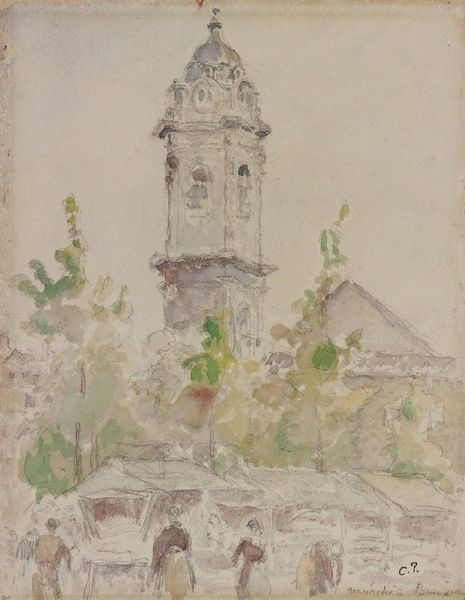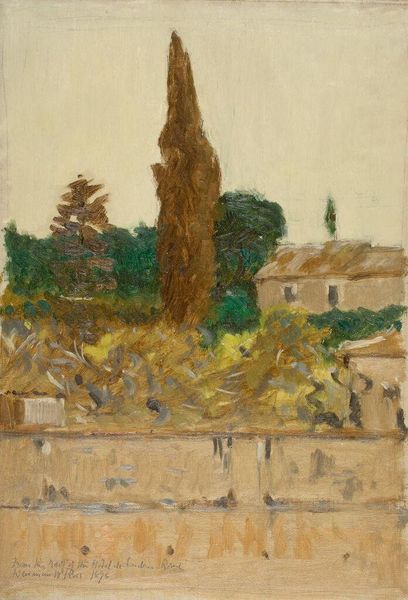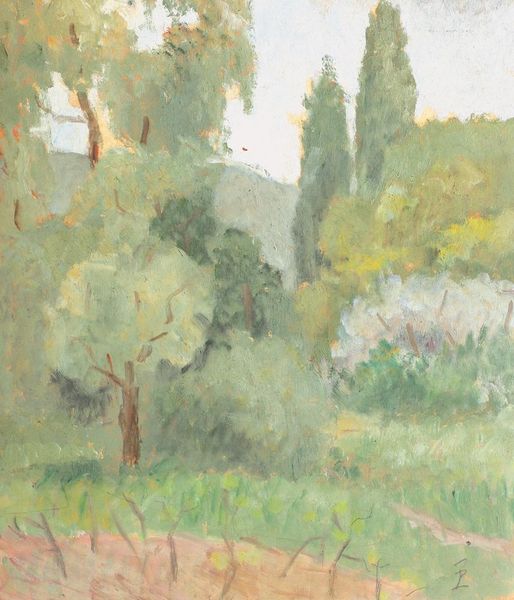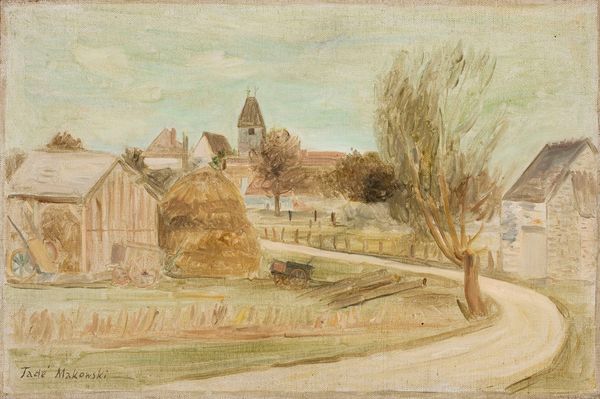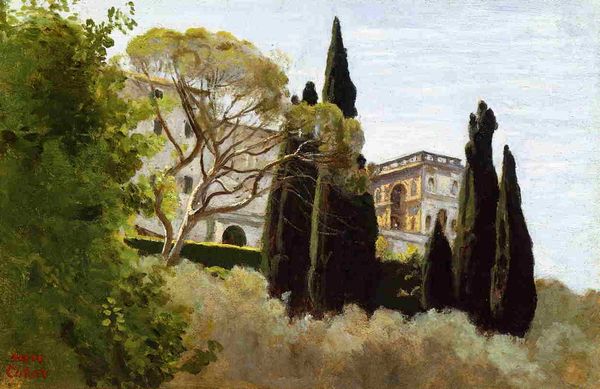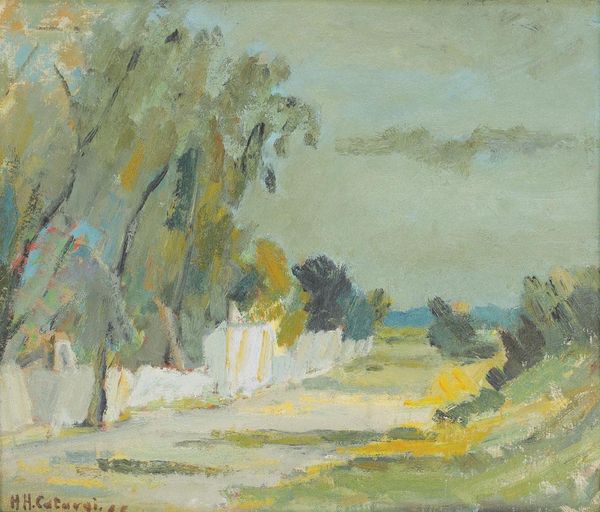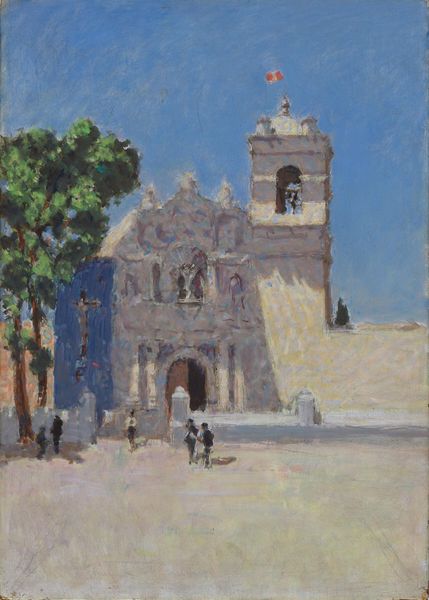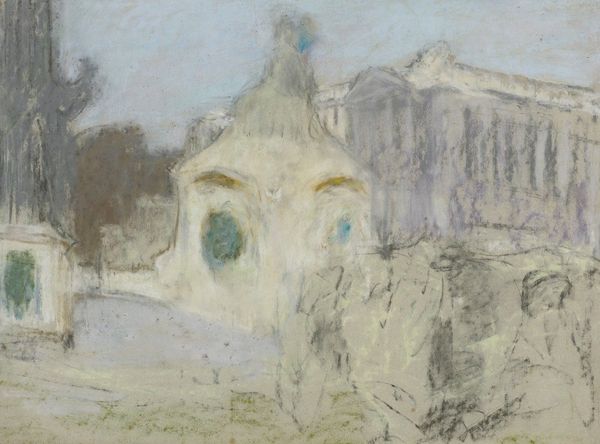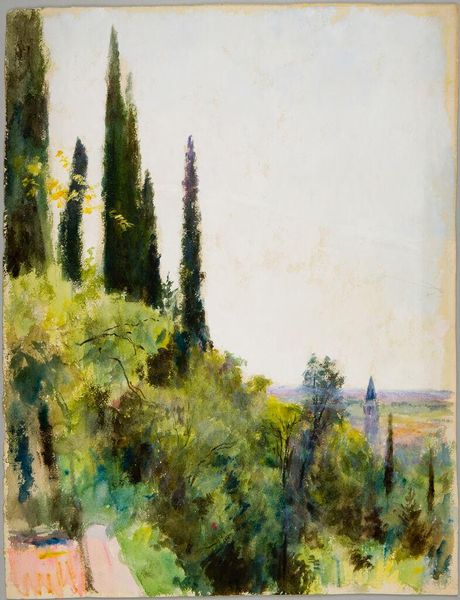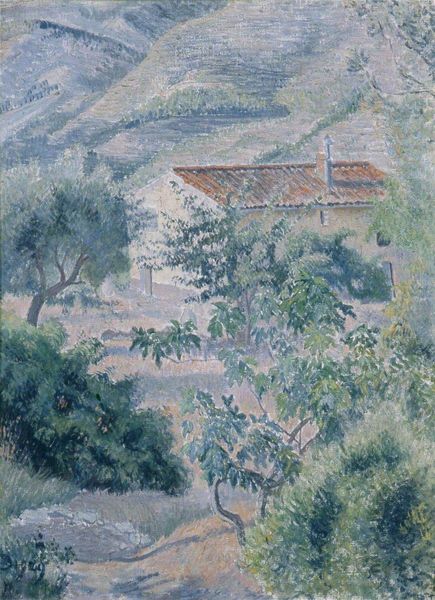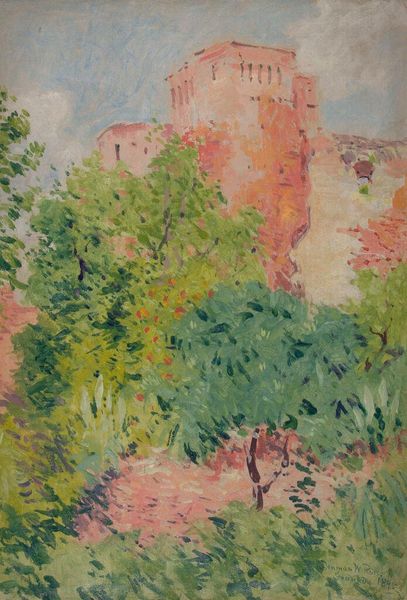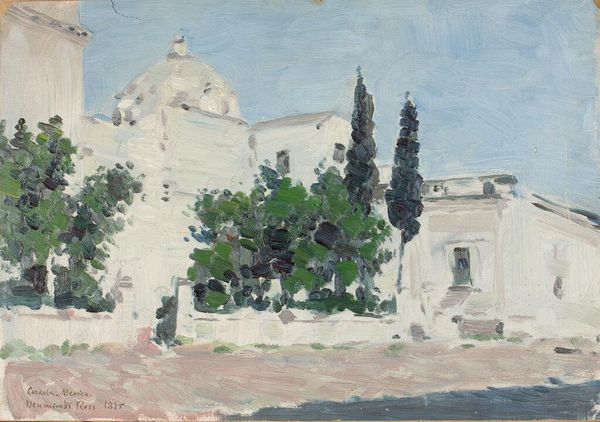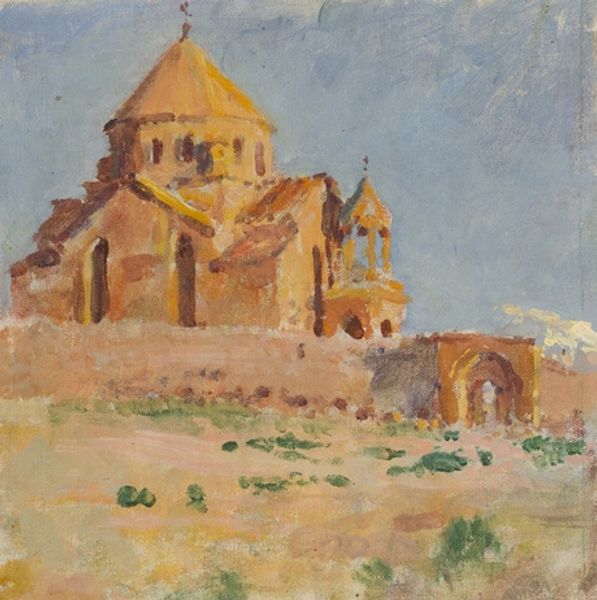
painting, oil-paint, impasto
#
painting
#
oil-paint
#
landscape
#
charcoal drawing
#
oil painting
#
impasto
#
cityscape
#
realism
Copyright: Avigdor Arikha,Fair Use
Curator: Avigdor Arikha created "Mount Zion, The Dormition" in 1991, an oil painting that captures a landscape view with noticeable impasto. Editor: It's incredibly tranquil; the muted palette creates this serene atmosphere, almost dreamlike. The building feels obscured, as if it's emerging from a distant memory. Curator: Indeed. Arikha was deeply interested in immediate perception and sought a raw, unfiltered capture of the visible world. He challenged the dominance of abstract art during his time. We can situate this piece within the Realism movement, but filtered through a modern lens of subjectivity. Editor: Knowing that context, the impasto becomes even more significant. The thickly applied paint isn’t just about representing texture; it’s about the act of seeing and recording a specific moment in time and it definitely gives an emotional charge to this seemingly objective scene. I almost feel a melancholic appreciation coming through, which is surprising for a landscape. Curator: He often portrayed landscapes imbued with his personal connection. Think about his experience of displacement and exile as a Holocaust survivor – and his relationship to this sacred site, specifically. "Mount Zion, The Dormition" is not just a picture, but potentially a rumination on loss, memory, and spiritual grounding in the diaspora. Editor: Yes! The title’s direct reference to 'Dormition' resonates powerfully when seen in this context. The haziness and the concealment by foliage could symbolize hidden histories and the layers of experience embedded in a place, specifically a land charged with narratives of dispossession and identity. The landscape then becomes this palpable space to reflect the psychological space he may have been navigating. Curator: And let’s consider the institutional backdrop: he lived and worked between Paris and Jerusalem, experiencing two major centers of artistic and intellectual discourse. We see that international exchange reflected in his style, as well as a deep connection to his cultural roots and diasporic identities. Editor: Exactly. By considering Arikha's personal history along with his geographical and historical contexts, we get a richer understanding that unveils its emotional depth. Curator: Precisely. This work asks us to look closely at not only what is visible but what lies beneath. Editor: I appreciate that even through an initial first glance to its more detailed nuances, this painting is deceptively complex, revealing greater stories and emotive properties the closer you look.
Comments
No comments
Be the first to comment and join the conversation on the ultimate creative platform.

